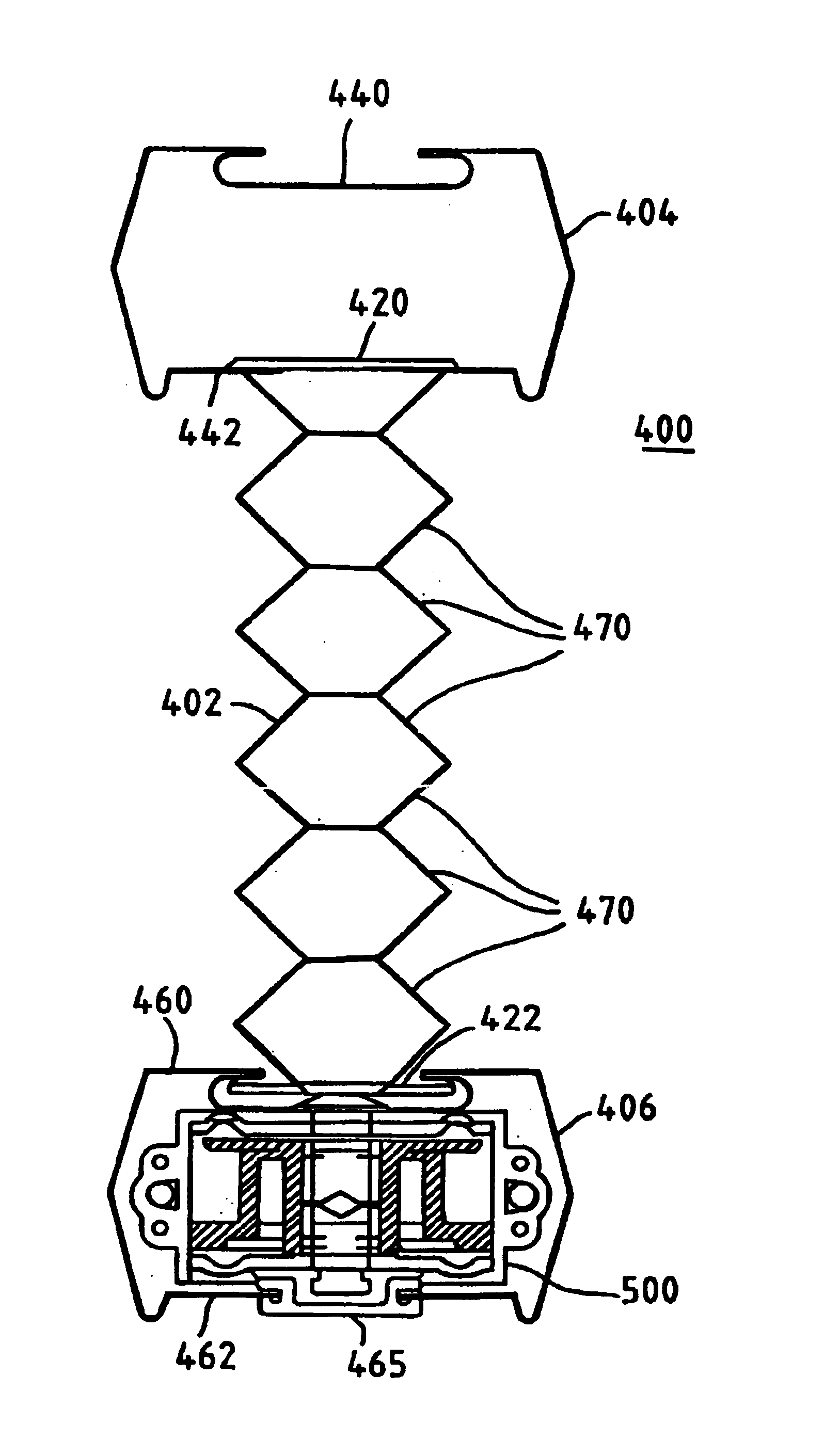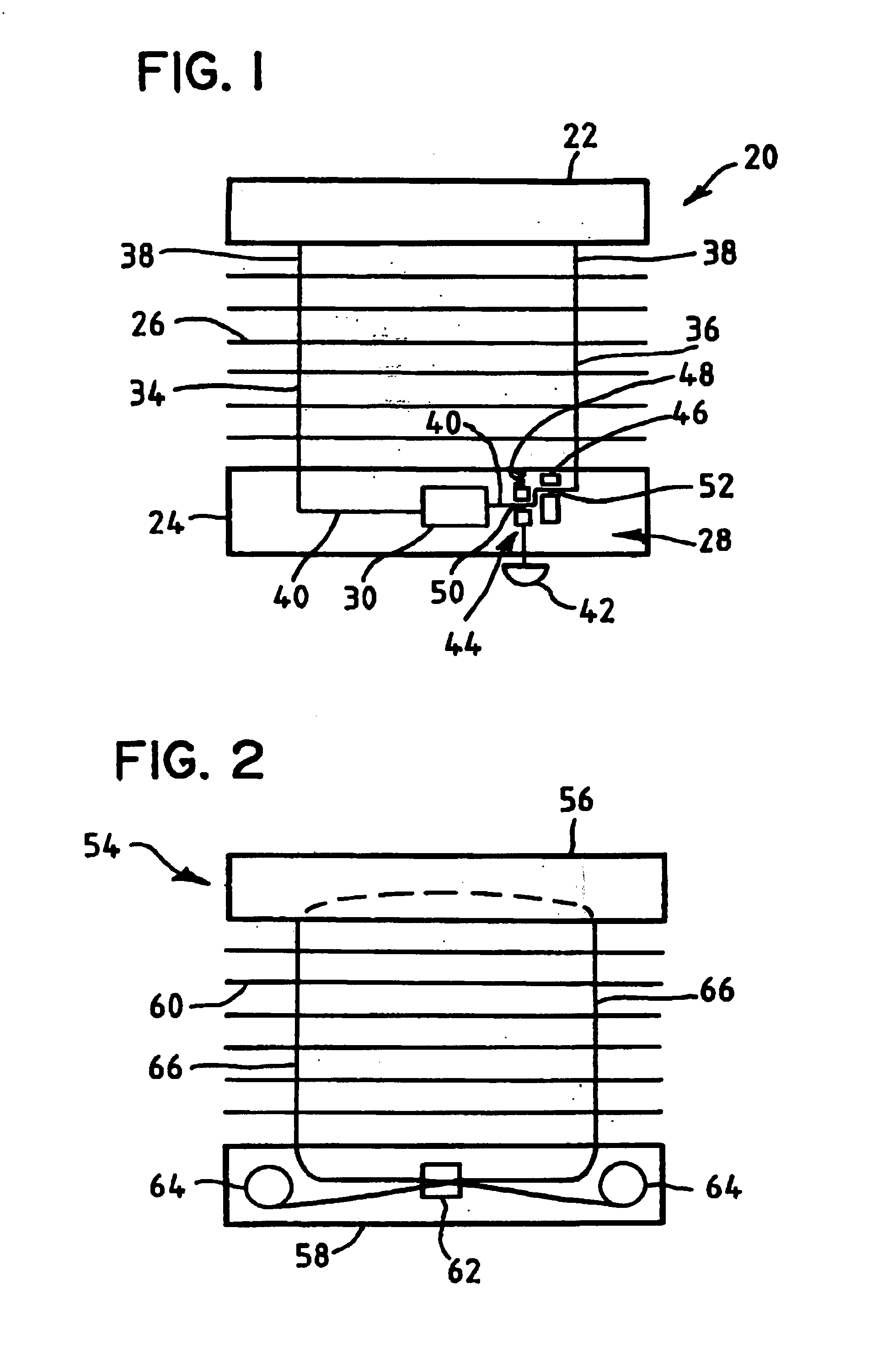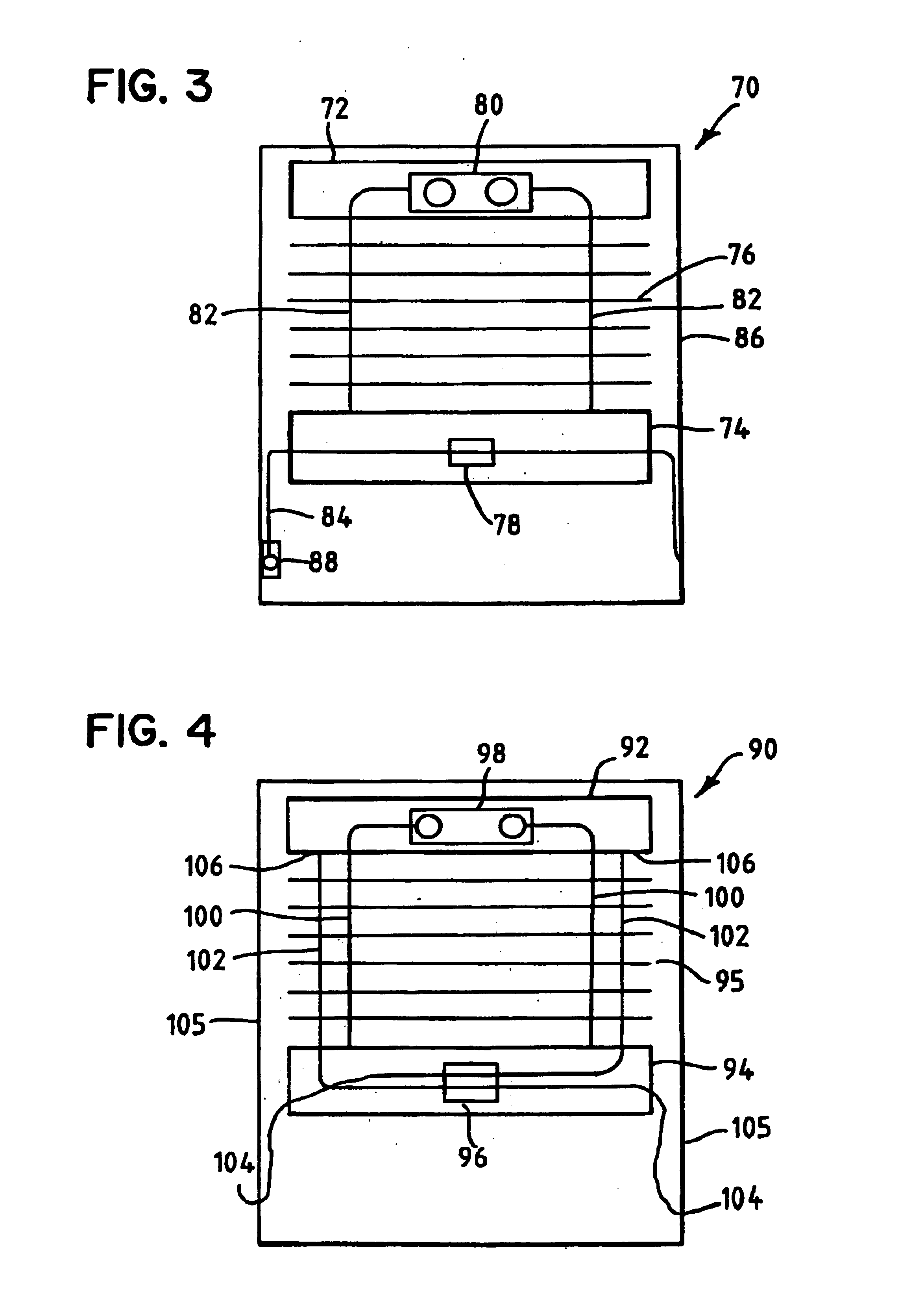One way brake for a cordless blind
a cordless blind and one-way brake technology, applied in the direction of shutters/movable grilles, door/window protective devices, wing arrangements, etc., can solve the problems of cost-intensive assembling and manufacturing of friction systems, small children and pets' safety concerns, and the cordless blinds do not lend themselves to size-in-store adjustmen
- Summary
- Abstract
- Description
- Claims
- Application Information
AI Technical Summary
Benefits of technology
Problems solved by technology
Method used
Image
Examples
Embodiment Construction
[0046]The embodiments illustrated in FIGS. 1-10 apply a braking mechanism to ensure that the bottom rail does not move (e.g. from accumulator weight of bottom rail and slats or from the spring force).
[0047]To ensure that the bottom rail does not move downward without additional force (commonly referred to as “creep”), the combined weight of the bottom rail (BRw) and the accumulated window covering (WCw) must be less than the forces resisting downward movement including the system friction (Ffd) resisting downward movement and the spring force of the spring motor (SMf). This can be expressed as (BRw+WCw)<(SMf+Ffd). The system friction (Ff) tends to oppose movement in both directions, although not necessarily with the same force, depending on the source of the system friction. Accordingly, system friction that opposes downward movement of the bottom rail will be designated Ffd and system friction that opposes upward movement of the bottom rail will be designated Ffu.
[0048]To ensure th...
PUM
 Login to View More
Login to View More Abstract
Description
Claims
Application Information
 Login to View More
Login to View More - R&D
- Intellectual Property
- Life Sciences
- Materials
- Tech Scout
- Unparalleled Data Quality
- Higher Quality Content
- 60% Fewer Hallucinations
Browse by: Latest US Patents, China's latest patents, Technical Efficacy Thesaurus, Application Domain, Technology Topic, Popular Technical Reports.
© 2025 PatSnap. All rights reserved.Legal|Privacy policy|Modern Slavery Act Transparency Statement|Sitemap|About US| Contact US: help@patsnap.com



